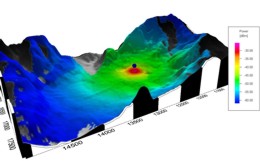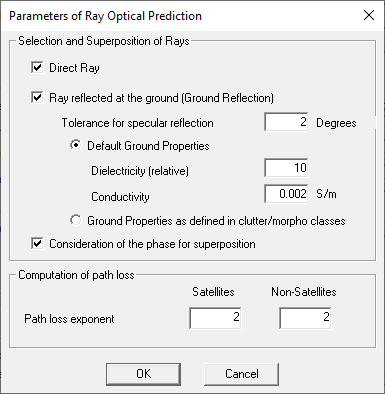Deterministic Two Ray Model
The deterministic two-ray (DTR) model computes the direct ray and the ground reflected ray with ray optical algorithms.
If the rays are shadowed by obstacles, they are not considered. This is the difference to the empirical two ray model (ETR) which considers both rays independent of their existence (that is if they are shadowed or not).
Click and click the Computation tab.

Figure 1. Example of the power obtained with the deterministic two ray (DTR) model in a hilly scenario.
As explained above, received power is only predicted for pixels which can be reached by the direct ray and the ground reflected ray. All pixels in areas without LOS to the transmitter are not predicted. To get a prediction also for these pixels, the DTR must be combined with the knife edge diffraction model to include the diffractions at the topographical obstacles.
For the specular reflection the incident angle of the ray and the reflected angle must be identical. The material properties of the ground can be defined and the reflection loss is computed depending on the angle of incidence and the material properties.
Settings

Figure 2. The Parameters of Ray Optical Prediction dialog.
- direct ray
- reflected ray with the following settings:
- tolerance for specular reflections
- default ground properties with electrical properties
- ground properties as defined in clutter / morpho table